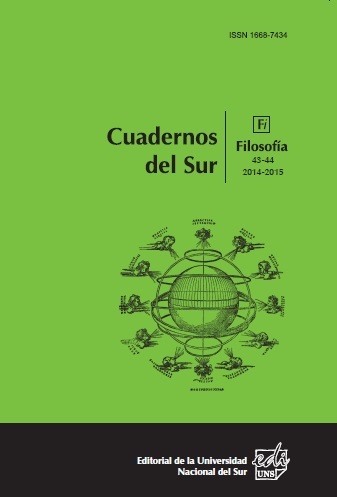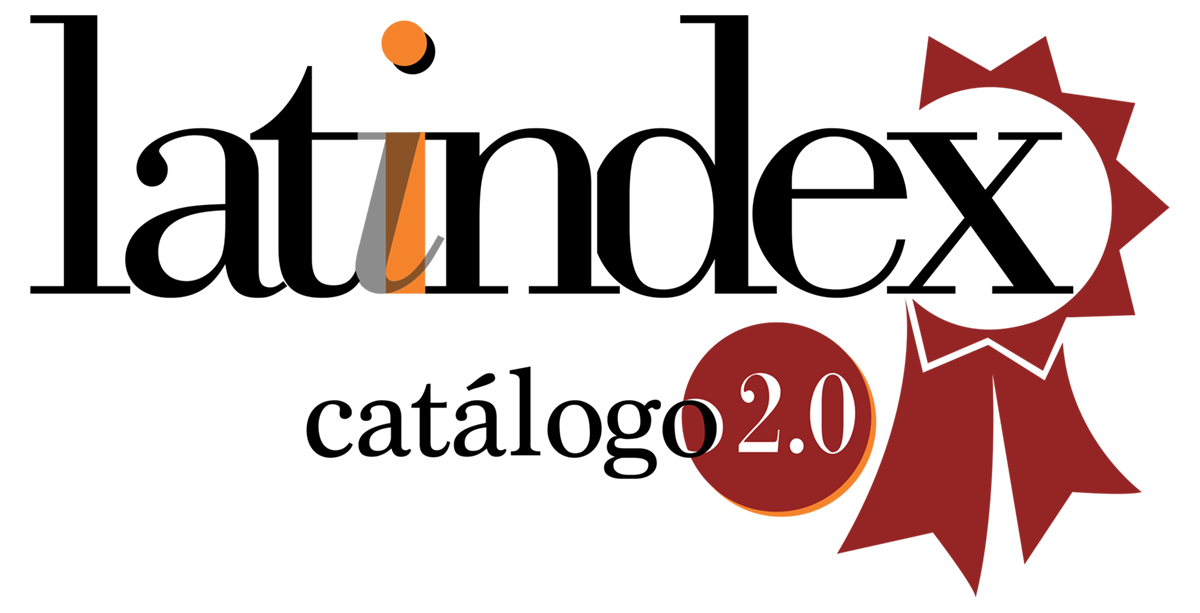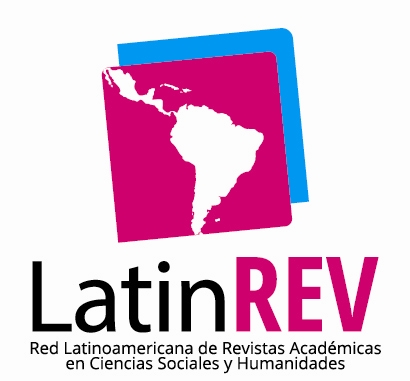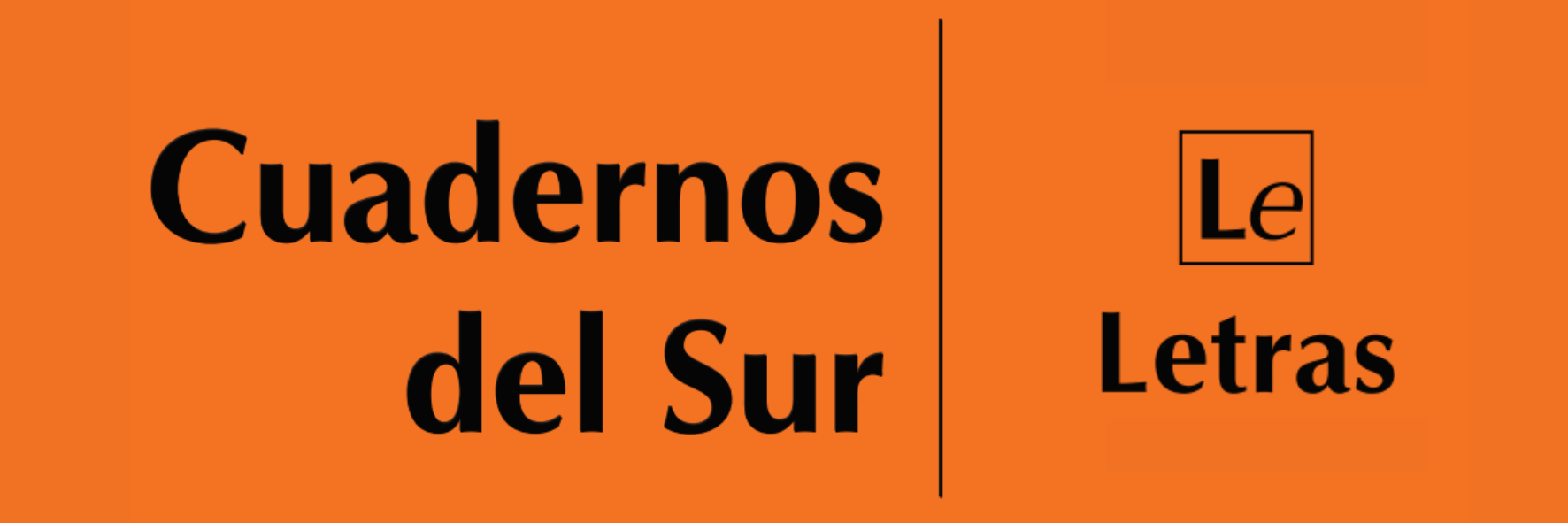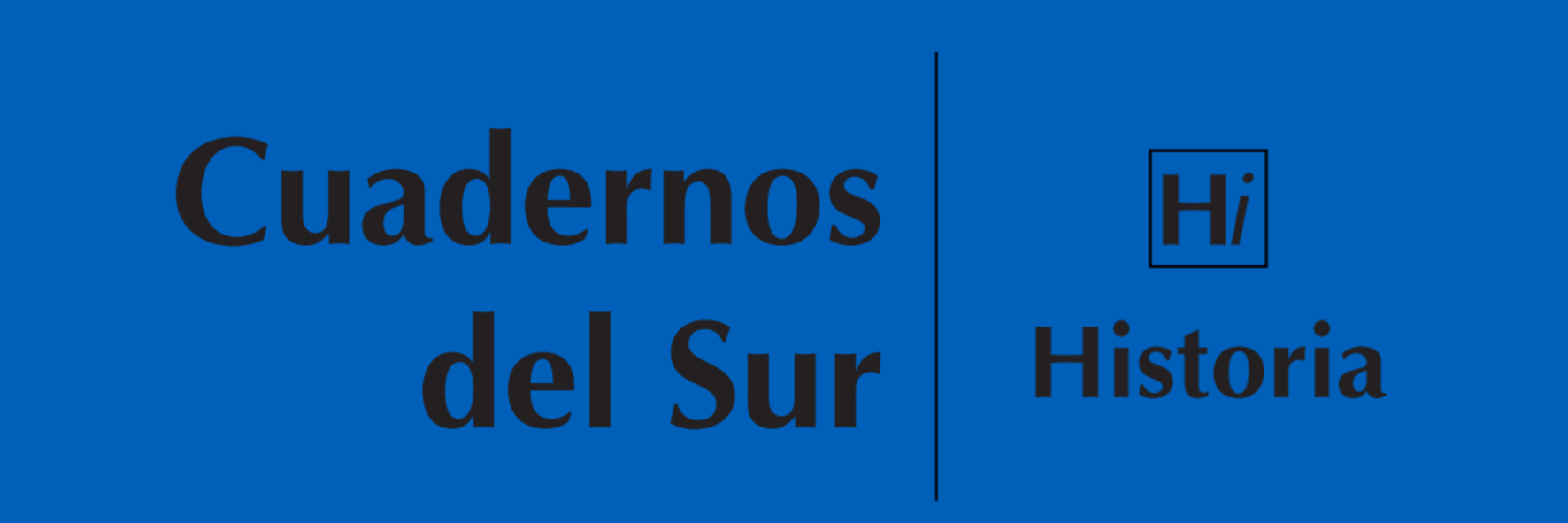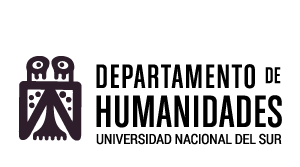Principios-guía y leyes fundamentales en la metateoría estructuralista
Keywords:
Guiding-principles, Fundamental laws, Metatheoretical structuralismAbstract
Th e aim of the present paper is to propose a characterization of guiding-principle and fundamental law within the conceptual framework of structuralist metatheory. We point out five “necessary conditions”, “weak necessary conditions” or «symptoms» that a statement must satisfy to qualify as a fundamental law of a theory: 1) to have a cluster or synoptic character, 2) to be valid in every intended application of the theory, 3) to be quasi-vacuous (“empirically unrestricted” or, if preferred, “a priori synthetic” or even “a posteriori analytic”), 4) to have a systematizing role and 5) to possess modal force. Guiding-principles are characterized as a special kind of undamental laws, namely, as fundamental laws possesing the following additional features: to include at least one “functional” among its T-teoretical terms and to existentially quantify over it. Later on, the proposed analysis is related to the problem of the laws of nature. We conclude with the discussion of some possible counterexamples.
Downloads
References
Armstrong, David (1983), What is a Law of Nature?, Cambridge, Cambridge University Press.
Ayer, Alfred J. (1956), “What Is a Law of Nature?”, Revue International de Philosophie, vol. 36, pp. 144-165.
Balzer, Wolfgang (1978), Empirische Geometrie und Raum-Zeit-Theorie in mengen-theoretischer Darstellung, Kronberg, Scriptor.
----- (1982), Empirische Theorien: Modelle-Strukturen-Beispiele, Braunschweig, Vieweg, [traducción castellana revisada: Teorías empíricas: modelos, estructuras y ejemplos, Madrid, Alianza, 1997].
----- (1985), Theorie und Messung, Berlin, Springer.
----- (1996), “Theoretical Terms: Recent Developments”, en Balzer, Wolfgang y Moulines, C. Ulises (eds.), Structuralist Theory of Science. Focal Issues, New Results, Berlin, de Gruyter, pp. 139-166.
Balzer, Wolfgang y Dawe, Chris M. (1990), Models for Genetics, München, Institut für Philosophie, Logik und Wissenschaftstheorie.
Balzer, Wolfgang y Lorenzano, Pablo (2000), “The Logical Structure of Classical Genetics”, Zeitschrift für allgemeine Wissenschaftstheorie, vol. 31, pp. 243-266.
Balzer, Wolfgang y Marcou, Ph. (1989), “A Reconstruction of Sigmund Freud’s Early Theory of the Unconscious”, en Westmeyer, Hans (ed.), Psychological Theories from a Structuralist Point of View, Berlin, Springer, pp. 13-31.
Balzer, Wolfgang y Moulines, C. Ulises (1981), “Die Grundstruktur der klassischen Partikelmechanik und ihre Spezialisierungen”, Zeitschrift für Naturforschung, vol. 36, n° 6, pp. 600-608.
Balzer, Wolfgang y Moulines, C. Ulises (eds.) (1996), Structuralist Theory of Science. Focal Issues, New Results, Berlin, de Gruyter.
Balzer, Wolfgang y Mühlhölzer, Felix (1982), “Klassische Stoβmechanik”, Zeitschrift fi ir allgemeine Wissenschaftstheorie, vol. 13, n° 1, pp. 22-39.
Balzer, Wolfgang y Sneed, Joseph (1977), “Generalized Net Structures of Empirical Theories I & II”, Studia Logica, vol. 36, pp. 195-211.
----- (1978), “Generalized Net Structures of Empirical Theories I & II”, Studia Logica, vol. 37, pp. 167-194.
Balzer, Wolfgang, Moulines, C. Ulises y Sneed, Joseph (1987), An Architectonic for Science. The Structuralist Program, Dordrecht, Reidel.
Balzer, Wolfgang, Moulines, C. Ulises y Sneed, Joseph (eds.) (2000), Structuralist Knowledge Representation: Paradigmatic Examples, Amsterdam, Rodopi.
Bartelborth, Thomas (1988), Eine logische Rekonstruktion der klassischen Elektrodynamik, Frankfurt am Main, Peter Lang.
----- (1996a), Begründungsstrategien. Ein Weg durch die analytische Erkenntnistheorie, Berlin, Akademie Verlag.
----- (1996b), “Scientifi c Explanation”, en Balzer, Wolfgang y Moulines, C. Ulises (eds.), Structuralist Theory of Science. Focal Issues, New Results, Berlin/New York, Walter de Gruyter, pp. 23-43.
----- (1999), “Coherence and Explanation”, Erkenntnis, vol. 50, pp. 209-224.
----- (2002), “Explanatory Unifi cation”, Synthese, vol. 130, pp. 91-107.
Bokulich, Alisa (2008), Reexamining the Quantum-Classical Relation: Beyond Reductionism and Pluralism, Cambridge, Cambridge University Press.
----- (2009), “Explanatory Fictions”, en Suárez, Mauricio (ed.), Fictions in Science. Philosophical Essays on Modeling and Idealization, London, Routledge, pp. 91-109.
Braithwaite, Richard (1953), Scientifi c Explanation, Cambridge, Cambridge University Press.
Carnap, Rudolf (1939), “Foundations of Logic and Mathematics”, International Encyclopedia of Unifi ed Science, vol. 1, nº 3, pp.1-71.
----- (1947), “On the Application of Inductive Logic”, Philosophy and Phenomenological Research, vol. 8, pp. 133-147.
----- (1956), “The Methodological Character of Theoretical Concepts”, en Feigl, Herbert y Scriven, Michael (eds.), Minnesota Studies in the Philosophy of Science, vol. I, Minneapolis, University of Minnesota Press, pp. 38-76.
----- (1966), Philosophical Foundations of Physics: An Introduction to the Philosophy of Science, New York, Basic Books.
Carrier, Martin (1995), “Evolutionary Change and Lawlikeness: Beatty on Biological generalizations”, en Wolters, Gereon y Lennox, James (eds.), Concepts, Theories and Rationality in the Biological Sciences, Konstanz, Konstanz University Press and Pittsburgh University Press, pp. 82-97.
Cartwright, Nancy (1983), How the Laws of Physics Lie, Oxford, Clarendon Press.
----- (1999), The Dappled World. A Study of the Boundaries of Science, Cambridge, Cambridge University Press.
----- (2005), “No God; No Laws”, en Sindoni, Elio y Moriggi, Stefano (eds.), Dio, la Natura e la Legge, God and the Laws of Nature, Milan, Angelicum-Mondo X, pp. 183-190.
Cartwright, Nancy, Shomar, Towfi c y Suárez, Mauricio (1995), “The Tool Box of Science: Tools for Building of Models with a Superconductivity Example”, en Herfel, William et al. (eds.), Theories and Models in Scientifi c Processes, Amsterdam, Rodopi, pp. 27-36.
Chisholm, Roderick (1946), “The Contrary-to-Fact Conditional”, Mind, vol. 55, pp. 289-307.
Coffa, J. Alberto (1973), Foundations of Inductive Explanation, Ann Arbor, University Microfi lms.
Díez, José A. (2002a), “Explicación, unifi cación y subsunción teórica”, en González, Wenceslao (ed.), Pluralidad de la explicación científi ca, Barcelona, Ariel, pp. 73-93.
----- (2002b), “A Program for the Individuation of Scientifi c Concepts”, Synthese, vol. 130, pp. 13-48.
----- (2014), “Scientifi c w-Explanation as Ampliative, Specialized Embedding: A Neo-Hempelian Account”, Erkenntnis, vol. 79, n° 8, pp. 1413-1443.
Díez, José A. y Lorenzano, Pablo (2002), “La concepción estructuralista en el contexto de la fi losofía de la ciencia del siglo XX”, en Díez, José A. y Lorenzano, Pablo (eds.), Desarrollos actuales de la metateoría estructuralista: problemas y discusiones, Bernal, Universidad Nacional de Quilmes/Universidad Autónoma de Zacatecas/Universidad Rovira i Virgili, pp. 13-78.
----- (2013), “Who Got What Wrong? Sober and F&PP on Darwin: Guiding Principles and Explanatory Models in Natural Selection”, Erkenntnis, vol. 78, n° 5, pp. 1143-1175.
----- (por aparecer), “Are Natural Selection Explanatory Models A Priori?”, Biology & Philosophy, vol. 30, n° 6, pp. 787-809.
Dretske, Fred (1977), “Laws of Nature”, Philosophy of Science, vol. 44, pp. 248-268.
Elgin, Mehmet y Sober, Elliott (2002), “Cartwright on Explanation and Idealization”, Erkenntnis, vol. 57, pp. 441-450.
Falguera, José Luis (2012), “Leyes fundamentales, a priori relativizados y géneros”, en García de la Sienra, Adolfo y Lorenzano, Pablo (eds.), La metateoría estructuralista en Xalapa, Stoa, vol. 3, n° 5, pp. 65-85.
Ferrario, Roberta y Schiaffonati, Viola (2012), Formal Methods and Empirical Practices. Conversations with Patrick Suppes, Stanford, Center for the Study of Language and Information (CSLI).
Fodor, Jerry (1974), “Special Sciences (or: the Disunity of Science as a Working Hypothesis)”, Synthese, vol. 28, pp. 97-116.
----- (1991), “Hedged Laws and Psychological Explanations”, Mind, vol. 100, pp. 19-33.
Forge, John (1986). “David Armstrong on Functional Laws”, Philosophy of Science, vol. 53, n° 4, pp. 584-587.
----- (1999), Explanation, Quantity and Law, Aldershot, Ashgate.
----- (2002), “Refl ections on Structuralism and Scientifi c Explanation”, Synthese, vol. 130, pp. 109-121.
Giere, Ronald N. (1979), Understanding Scientifi c Reasoning, New York, Holt, Reinhart and Winston, [3ª ed. revisada, 1991].
----- (1988), Explaining Science. A Cognitive Approach, Chicago, University of Chicago Press.
----- (1995), “The Skeptical Perspective: Science without Laws of Nature”, en Weinert, Friedel (ed.), Laws of Nature. Essays on the Philosophical, Scientific and Historical Dimensions, Berlin, de Gruyter, pp. 120-138. Reimpreso como “Science without Laws of Nature”, en Giere (1999), pp. 84-96.
----- (1999), Science Without Laws, Chicago, University of Chicago Press.
Ginnobili, Santiago (2010), “La teoría de la selección natural darwiniana”, Theoria, vol. 25, n° 1, pp. 37-58.
Goodman, Nelson (1947), “The Problem of Counterfactual Conditionals”, Journal of Philosophy, vol. 44, pp. 113-128.
----- (1955), Fact, Fiction, and Forecast, Cambridge, Mass., Harvard University Press, [4ª ed., 1983].
Hanson, Norwood R. (1958), Patterns of Discovery, Cambridge, Cambridge University Press.
----- (1963), “The Law of Inertia; A Philosopher’s Touchstone”, Philosophy of Science, vol. 30, n° 2, pp. 107-121.
Hempel, Carl G. (1942), “The Function of General Laws in History”, The Journal of Philosophy, vol. 39, pp. 35-48.
----- (1958), “The Theoretician’s Dilemma”, en Feigl, Herbert, Scriven y Maxwell, Grover (eds.), Minnesota Studies in the Philosophy of Science, vol. II, Minneapolis, University of Minnesota Press, pp. 37-98.
----- (1965a), “Postscript (1964)”, en Hempel, Carl G., Aspects of Scientific Explanation and Other Essays in the Philosophy of Science, New York, Macmillan, pp. 47-51.
----- (1965b), “Aspects of Scientifi c Explanation”, en Hempel, Carl G., Aspects of Scientifi c Explanation and Other Essays in the Philosophy of Science, New York, Macmillan, pp. 331-496.
----- (1988), “Provisos: A Problem Concerning the Inferential Function of Scientific Theories”, en Grünbaum, Adolf y Salmon, Wesley (eds.), The Limitations of Deductivism, Berkeley, University of California Press, pp. 19-36.
Hempel, Carl G. y Oppenheim, Paul (1948), “Studies in the Logic of Explanation”, Philosophy of Science, vol. 15, pp. 135-175.
Hume, David (1739-1940), A Treatise of Human Nature, Cheapside, John Noon, Books I and II, London, Thomas Longman, Book III.
----- (1748), An Enquiry Concerning Human Understanding, London, A. Millar.
Kuhn, Thomas (1970a), The Structure of Scientifi c Revolutions, Chicago, University of Chicago Press, [2a ed].
----- (1970b), “Refl ections on my Critics”, en Lakatos, Imre y Musgrave, Alan (eds.), Criticism and the Growth of Knowledge, Cambridge, Cambridge University Press, pp. 231-278.
----- (1974), “Second Thoughts on Paradigms”, en Suppe, Frederick (ed.), The Structure of Scientifi c Theories, Urbana, University of Illinois Press, pp. 459-482.
----- (1976), “Theory-Change as Structure-Change: Comments on the Sneed Formalism”, Erkenntnis, vol. 10, pp. 179-199.
----- (1977), The Essential Tension. Selected Studies in Scientifi c Tradition and Change, Chicago, University of Chicago Press.
----- (1981), “What are Scientifi c Revolutions?”, Occasional Paper #18, Center for Cognitive Science, M.I.T.
----- (1983), “Rationality and Theory Choice”, Journal of Philosophy, vol. 80, pp. 563-570.
----- (1989), “Possible Worlds in History of Science”, en Allén, Sture (ed.), Possible Worlds in Humanities, Arts, and Sciences, Berlin, de Gruyter, pp. 9-32.
----- (1990), “Dubbing and Redubbing: the Vulnerability of Rigid Designation”, en Savage, C. Wade (ed.), Minnesota Studies in the Philosophy of Science, vol. 14, Minneapolis, University of Minnesota Press, pp. 298-318.
Lakatos, Imre (1970), “Falsifi cation and the Methodology of Scientifi c Research Programmes”, en Lakatos, Imre y Musgrave, Alan (eds.), Criticism and the Growth of Knowledge. Proceedings of the International Colloquium in the Philosophy of Science, London, 1965, Cambridge, Cambridge University Press, pp. 91-195.
----- (1971), “History of Science and Its Rational Reconstructions”, en Buck, Roger C. y Cohen, Robert S. (eds.), PSA 1970, Boston Studies in the Philosophy of Science, vol. 8, Dordrecht, Reidel, pp. 174-182.
----- (1974), “Popper on Demarcation and Induction”, en Schilpp, Paul (ed.), The Philosophy of Karl Popper, LaSalle, Ill., Open Court, vol. I, pp. 241-273.
Laudan, Larry (1977), Progress and Its Problems, Berkeley, University of California Press.
Lewis, David (1973a), Counterfactuals, Cambridge, Mass., Harvard University Press.
----- (1973b), “Causation”, Journal of Philosophy, vol. 70, pp. 556-567.
----- (1983), “New Work for a Theory of Universals”, Australasian Journal of Philosophy, vol. 61, pp. 343-377.
Lorenzano, Pablo (1995), Geschichte und Struktur der klassischen Genetik, Frankfurt am Main, Peter Lang.
----- (2000), “Classical Genetics and the Theory-Net of Genetics”, en Balzer, Wolfgang, Moulines, C. Ulises y Sneed, Joseph (eds.), Structuralist Knowledge Representation: Paradigmatic Examples, Amsterdam, Rodopi, pp. 251-284.
----- (2002), “La teoría del gen y la red teórica de la genética”, en Díez, José A. y Lorenzano, Pablo (eds.), Desarrollos actuales de la metateoría estructuralista: problemas y discusiones, Bernal, Universidad Nacional de Quilmes/Universidad Autónoma de Zacatecas/Universidad Rovira i Virgili, pp. 285-330.
----- (2005), “Comentarios a ‘Explicación teórica y compromisos ontológicos: un modelo estructuralista’ de C. U. Moulines”, Enrahonar: quaderns de filosofía, vol. 37, pp. 55-59.
----- (2006), “Fundamental Laws and Laws of Biology”, en Ernst, Gerhard y Niebergall, Karl-Georg (eds.), Philosophie der Wissenschaft – Wissenschaft der Philosophie. Festschrift für C. Ulises Moulines zum 60. Geburstag, Paderborn, Mentis-Verlag, pp. 129-155.
----- (2007), “Leyes fundamentales y leyes de la biología”, Scientiae Studia. Revista Latino-Americana de Filosofía e História da Ciência, vol. 5, n° 2, pp. 185-214.
----- (2008a), “Lo a priori constitutivo y las leyes (y teorías) científi cas”, Revista de Filosofía, vol. 33, n° 2, pp. 21-48.
----- (2008b), “Bas van Fraassen y la ley de Hardy-Weinberg: una discusión y desarrollo de su diagnóstico”, Principia, vol. 12, n° 2, pp. 121-154.
----- (2011a), “Leis e teorias em biologia”, en Abrantes, Paulo C. (ed.), Filosofi a da Biologia, Porto Alegre, Artmed, pp. 53-82.
----- (2011b), “Racionalidad, leyes fundamentales y leyes de la biología”, en Pérez Ransanz, Ana Rosa y Velasco, Ambrosio (eds.), Racionalidad en ciencia y tecnología. Nuevas perspectivas iberoamericanas, México, UNAM, pp. 313-326.
----- (2013), “The Semantic Conception and the Structuralist View of Theories: A Critique of Suppe’s Criticisms”, Studies in History and Philosophy of Science, vol. 44, pp. 600-607.
----- (2014), “What is the Status of the Hardy-Weinberg Law within Population Genetics?”, en Galavotti, Maria Carla, Nemeth, Elisabeth y Stadler, Friedrich (eds.), European Philosophy of Science – Philosophy of Science in Europe and the Viennese Heritage, Vienna Circle Institute Yearbook 17, Dordrecht, Springer, pp. 159-172.
----- (por aparecer), “Leyes fundamentales y principios-guía en la metateoría estructuralista”, en Díez, José A. (ed.), Exploraciones pluralistas, México-Madrid, UNAM/Biblioteca Nueva.
Mackie, John L. (1966), “The Direction of Causation”, Philosophical Review, vol. 75, pp. 441-466.
Mitchell, Sandra D. (1997), “Pragmatic Laws”, Philosophy of Science, vol. 64 (Proceedings), pp. S468-S479.
Mill, John Stuart (1843), A System of Logic, London, John W. Parker. Morgan, Mary y Morrison, Margaret (eds.) (1999), Models as Mediators, Cambridge, Cambridge University Press.
Morrison, Margaret (1999), “Models and Autonomous Agents”, en Morgan, Mary y Morrison, Margaret (eds.), Models as Mediators, Cambridge, Cambridge University Press, pp. 38-65.
Mosterín, Jesús (1984), Conceptos y teorías en la ciencia, Madrid, Alianza, [2a ed., 1987].
Moulines, C. Ulises (1975), Zur logischen Rekonstruktion der Thermodynamik, München, Ludwig-Maximilian-Universität München, [tesis doctoral].
----- (1978), “Cuantifi cadores existenciales y principios-guía en las teorías físicas”,Crítica, vol. 10, pp. 59-88, [reimpreso, con ligeras modifi caciones, ninguna sustancial, como “Forma y función de los principios-guía en las teorías físicas”, en Moulines, C. Ulises (1982), Exploraciones metacientífi cas, Madrid, Alianza, pp. 88-107].
----- (1982), Exploraciones metacientífi cas, Madrid, Alianza.
----- (1991), Pluralidad y recursión, Madrid, Alianza.
----- (2002), “Introduction: Structuralism as a Program for Modelling Theoretical Science”, Synthese, vol. 130, n° 1, pp. 1-11.
----- (2005), “Explicación teórica y compromisos ontológicos: un modelo estructuralista”, Enrahonar: quaderns de filosofía, vol. 37, pp. 45-53.
----- (2008), Die Entwicklung der modernen Wissenschaftstheorie (1890-2000). Eine historische Einführung, Hamburg, LIT-Verlag.
----- (2011), “Cuatro tipos de desarrollo teórico en las ciencias”, Metatheoria, vol. 1, n° 2, pp. 11-27.
----- (2014), “Intertheoretical Relations and the Dynamics of Science”, Erkenntnis, vol. 79, n° 8 (suplemento), pp. 1505-1519.
Nagel, Ernest (1961), The Structure of Science, New York, Harcourt, Brace & World.
Palmquist, Stephen (1987a), “A Priori Knowledge in Perspective: (II) Naming, Necessity and the Analytic A Posteriori”, The Review of Metaphysics, vol. 41, n° 2, pp. 255-282.
----- (1987b), “Knowledge and Experience-An Examination of the Four Refl ective ‘Perspectives’ in Kant’s Critical Philosophy”, Kant-Studien, vol. 78, n° 2, pp. 170-200.
Popper, Karl (1935), Logik der Forschung, Wien, Julius Springer, [Tübingen, J.C.B. Mohr (Paul Siebeck), 1989, 9a ed. ampliada].
Ramsey, Frank P. (1928), “Universals of Law and of Fact”, en Braithwaite, Richard B. (ed.), The Foundations of Mathematics and other Logical Essays, London, Kegan Paul, pp. 128-132.
----- (1929), “Philosophy”, en Braithwaite, Richard B. (ed.), The Foundations of Mathematics and other Logical Essays, London, Kegan Paul, pp. 263-269.
Reichenbach, Hans (1947), Elements of Symbolic Logic, New York, MacMiIlanCo.
----- (1954), Nomological Statements and Admissible Operations, Amsterdam, North-Holland.
Richardson, Alan W. (2002), “Narrating the History of Reason Itself: Friedman, Kuhn, and a Constitutive A Priori for the Twenty-First Century”, Perspectives on Science, vol. 10, n° 3, pp. 253-274.
Ruby, Jane E. (1986), “The Origin of Scientifi c ‘Law’”, Journal of the History of Ideas, vol. 47, n° 3, pp. 341-359.
Russell, Bertrand (1905), “On Denoting”, Mind, vol. 14, pp. 479-493.
Salmon, Wesley (1989), “Four Decades of Scientifi c Explanation”, en Kitcher, Philip y Salmon, Wesley (eds.), Scientifi c Explanation. Minnesota Studies in the Philosophy of Science, vol. 13, Minneapolis, University of Minnesota Press, pp. 3-219.
Schlick, Moritz (1918), Allgemeine Erkenntnislehre, Berlin, Julius Springer.
----- (1931), “Die Kausalität in der gegenwärtigen Physik”, Die Naturwissenschaften, vol. 19, n° 7, pp. 145-162.
Schurz, Gerhard (2009), “Normic Laws, Non-monotonic Reasoning, and the Unity of Science”, en Rahman, Shahid, Symons, John, Gabbay, Dov M. y van Bendegem, Jean Paul (eds.), Logic, Epistemology, and the Unity of Science, Dordrecht, Springer, pp. 181-211.
Scriven, Michael (1959), “The Key Property of Physical Laws – Inaccuracy”, en Feigl, Herbert y Maxwell, Grover (eds.), Current Issues in the Philosophy of Science – Proceedings of Section L of the American Association for the Advancement of Sciences, 1959, New York, Holt Rinehart and Winston, pp. 91-104.
Sneed, Joseph (1971), The Logical Structure of Mathematical Physics, Dordrecht, Reidel, [2ª ed. revisada, 1979].
Stegmüller, Wolfgang. (1973), Theorienstrukturen und Theoriendynamik, Heidelberg, Springer.
----- (1978), “A Combined Approach to the Dynamics of Theories”, Theory and Decision, vol. 9, pp. 29-75.
----- (1979a), “The Structuralist View: Survey, Recent Development and Answers to Some Criticisms”, en Niiniluoto, Ilkka y Tuomela, Raimo (eds.), The Logic and Epistemology of Scientifi c Change (Acta Philosophica Fennica 30), Amsterdam, North-Holland, pp. 113-129.
----- (1979b), The Structuralist View of Theories, Berlin, Springer.
----- (1983), Erklärung–Begründung–Kausalität, Berlin / Heidelberg / New York, Springer, [2a ed. ampliada y modifi cada].
----- (1986), Die Entwicklung des neuen Strukturalismus seit 1973, Berlin-Heidelberg, Springer.
Suppe, Frederick (1967), The Meaning and Use of Models in Mathematics and the Exact Sciences, Ann Arbor, Michigan, University of Michigan, [tesis doctoral].
----- (1972), “What’s Wrong with the Received-View on the Structure of Scientific Theories?”, Philosophy of Science, vol. 39, n° 1, pp. 1-19.
----- (1989), The Semantic Conception of Theories and Scientifi c Realism, Urbana and Chicago, University of Illinois Press.
----- (2000), “Understanding Scientifi c Theories: An Assessment of Developments, 1969-1998”, Philosophy of Science 67 (Proceedings), pp. S102-S115.
Suppes, Patrick (1957), Introduction to Logic, New York: Van Nostrand.
----- (1962), “Models of Data”, en Nagel, Ernest, Suppes, Patrick y Tarski, Alfred (eds.), Logic, Methodology and Philosophy of Science: Proceedings of the 1960 International Congress, Stanford, Stanford University Press, pp. 252-261.
----- (1969), Studies in the Methodology and Foundations of Science, Dordrecht, Reidel.
----- (1970), Set-theoretical Structures in Science, Stanford, Stanford University.
----- (1993), Models and Methods in the Philosophy of Science: Selected Essays, Dordrecht: Reidel.
----- (2002), Representation and Invariance of Scientifi c Structures, Stanford, Center for the Study of Language and Information (CSLI).
Swartz, Norman (1995), “The Neo-Humean Perspective: Laws as Regularities”, en Weinert, Friedel (ed.), Laws of Nature. Essays on the Philosophical, Scientific and Historical Dimensions, Berlin, de Gruyter, pp. 67-91.
Tooley, Michael (1977), “The Nature of Laws”, Canadian Journal of Philosophy, vol. 7, pp. 667-698.
Toulmin, Stephen (1953), The Philosophy of Science, London, Hutchinson & Co.
----- (1961), Foresight and Understanding: An Enquiry Into the Aims of Science, Bloomington: Indiana University Press.
van Fraassen, Bas (1970), “On the Extension of Beth’s Semantics of Physical Theories”, Philosophy of Science, vol. 37, pp. 325-339.
----- (1972), “A Formal Approach to the Philosophy of Science”, en Colodny, Robert (ed.), Paradigms and Paradoxes, Pittsburgh, University of Pittsburgh Press, pp. 303-366.
----- (1977), “The Only Necessity is Verbal Necessity”, Journal of Philosophy, vol. 74, pp. 71-85.
----- (1980), The Scientifi c Image, Oxford, Clarendon Press.
----- (1987), “The Semantic Approach to Scientifi c Theories”, en Nersessian, Nancy (ed.), The Process of Science, Dordrecht, Nijhoff, pp. 105-124.
----- (1989), Laws and Symmetry, Oxford, Clarendon Press/Oxford University Press.
----- (1993), “Armstrong, Cartwright, and Earman on Laws and Symmetry”, Philosophy and Phenomenological Research, vol. 53, n° 2, pp. 431-444.
----- (2008), Scientifi c Representation: Paradoxes of Perspective, Oxford, Oxford University Press.
Weinert, Friedel (1995), “Laws of Nature–Laws of Science”, en Weinert, Friedel (ed.), Laws of Nature. Essays on the Philosophical, Scientifi c and Historical Dimensions, Berlin, de Gruyter, pp. 3-64.
Woodward, James (2003), Making Things Happen: A Theory of Causal Explanation, New York, Oxford University Press.
Zilsel, Edgar (1942), “The Genesis of the Concept of Scientifi c Law”, The Philosophical Review, vol. 51, pp. 245-267.
Downloads
How to Cite
Issue
Section
License
Copyright (c) 2014 Pablo Lorenzano

This work is licensed under a Creative Commons Attribution-NonCommercial 4.0 International License.
Aquellos autores/as que tengan publicaciones con esta revista, aceptan los términos siguientes:- Los autores/as conservarán sus derechos de autor y garantizarán a la revista el derecho de primera publicación de su obra, el cuál estará simultáneamente sujeto a la licencia Atribución-No Comercial 4.0 Internacional CC BY-NC 4.0.
- Los autores/as podrán adoptar otros acuerdos de licencia no exclusiva de distribución de la versión de la obra publicada (p. ej.: depositarla en un archivo telemático institucional o publicarla en un volumen monográfico) siempre que se indique la publicación inicial en esta revista.
- Se permite y recomienda a los autores/as difundir su obra a través de Internet (p. ej.: en archivos telemáticos institucionales o en su página web) una vez publicado su trabajo, lo cual puede producir intercambios interesantes y aumentar las citas de la obra publicada. (Véase El efecto del acceso abierto).

